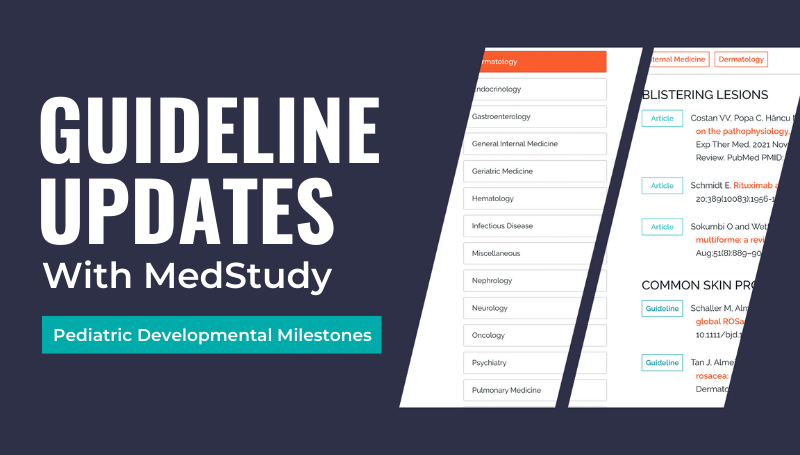Guideline Updates With MedStudy- Pediatric Developmental Milestones

Paul Catalana, MD, of the University of South Carolina School of Medicine at Greenville, explains the new pediatric developmental milestones table from the American Academy of Pediatrics and the Centers for Disease Control and Prevention.
First, here’s a little background.
This new developmental surveillance checklist identifies behaviors that 75% of children are expected to display at a particular age. In the past, developmental milestones were based on behaviors that only 50% of children were expected to exhibit at a certain age.
Also, over the last several years, various resources have offered different timelines in regards to when children should meet milestones. This revised guideline offers one tool for pediatricians to use for surveillance.
Dr. Catalana walks us through the changes.
How Will This Update Affect Your Decision-Making?
All in all, this update should improve a physician’s ability to speak with parents of young children in a more reliable and consistent way when discussing developmental milestones. Here’s how:
- Because 75% of children are expected to meet these milestones, physicians will be much less likely to adopt a “wait and see” approach to intervention. So, surveillance using these new checklists will enable all practicing physicians to more promptly and more efficiently refer children onto a screening process.
- Since the milestones have been streamlined (and a good number have even been eliminated!) and are now much more specific and prescriptive, there should be limited potential for confusion.
- This should also hasten the referral of a potentially at-risk child for a screening process, and thus onto an intervention process.
- Plus, the changes to the developmental milestones table encourage pediatricians to use one particular resource—further streamlining care.
Looking for more information on the latest guideline updates? Check out our Hub!


